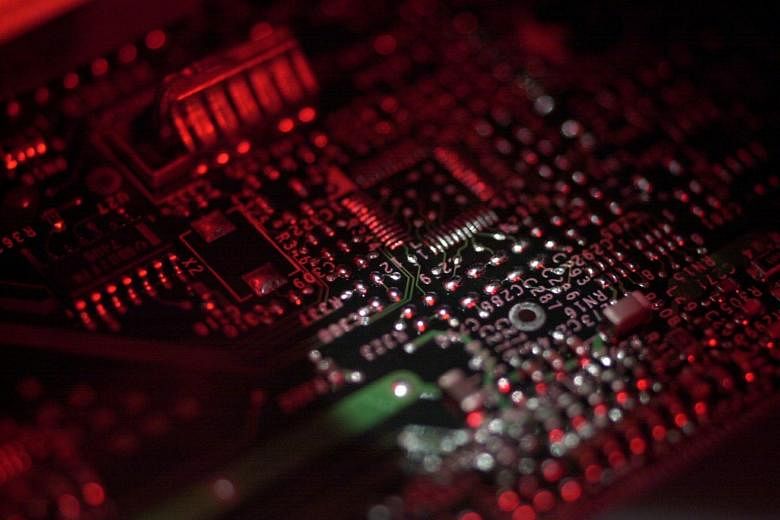Factory output in Singapore took a deep plunge last month, led by a surprisingly large decline in electronics.
Shrinking output threatens to dampen hopes the export-driven sector will bottom out soon.
Still, the drop rhymes with the slide in non-oil domestic exports in the same month and represents depressed demand for goods before the United States-China phase-1 trade deal and the polls in Britain that have raised hopes for a more orderly Brexit.
Electronics production fell 20.9 per cent year on year in November, with semiconductors down 25.7 per cent, according to figures released by the Economic Development Board yesterday. That is despite a 29.8 per cent jump in the infocomms and consumer electronics segment and a 23.1 per cent increase in data storage output.
Given the volatile nature of the industry, most analysts and executives are holding on to their optimism for a global tech turnaround starting with semiconductors, the building blocks of all electronic products from mobile phones to computers, smart TVs to robots.
In addition to some pent-up demand for Dram and Nand memory chips, a new generation of semiconductors - along with equipment to design, fabricate and test them - will be needed in the coming years to power the next generation of automation, robotics, sensors, connectivity, analytics, big data and artificial intelligence (AI) technologies and design systems.
Beginning of new technological cycle
"Semiconductor output may continue to shrink through the first quarter of next year," said Ms Ling Lee Keng, an analyst at DBS Group Research. "But we expect the start of a sustained recovery some time in the second quarter, supported by a global tech industry up-cycle," she added.
The revival in demand has already been beckoned by the world semiconductor industry. Shipping, billing and inventories started to turn positive around the second quarter of the year.
That should lead to an improvement across the entire technology value chain and further boost the appetite for microchips.
"This sets the stage for a turnaround in the semiconductor industry that has been plagued by a slump in memory chip demand, among others, over the last two years or so," said Ms Ling.
According to World Semiconductor Trade Statistics, the global semiconductor market is expected to grow 5.9 per cent next year after an estimated 12.8 per cent decline this year.
The call echoes similar predictions by global industry association Semi and consultant International Data Corporation.
The upswing next year is tipped to be the beginning of a new technological cycle.
In a recent LinkedIn article, Microsoft president Brad Smith and senior communications director Carol Ann Browne wrote: "We enter a new decade with an increasing capability to rely on machines with computer vision, speech recognition and language translation, all powered by algorithms that recognise patterns within vast quantities of digital data stored in the cloud."
The 2020s will likely see new developments that will further transform the use of technology around the world, including the increasing use of quantum computing, digital data storage in the cloud and advanced connectivity through expansion of the 5G network, further empowering the Internet of Things and AI.
The wave of these new technologies presents an inflection point for Singapore's semiconductor industry.
The sector contributes about 7 per cent to 8 per cent to the annual gross domestic product and supports around 35 per cent of the manufacturing workforce.
Mr Chok Yean Hung, group chief executive officer at Singapore-listed AEM Holdings, said that even though infrastructure, workforce skills and productivity will continue to be critical to competitiveness in the years ahead, low-cost labour alone will not be enough.
"With a good pool of talents as a backbone, we should see Singapore's semiconductor industry evolving from labour-intensive value-add to technology-driven value-add with the heightening of automation and data-centric engineering riding on Industry 4.0," he said.
Mr Ang Wee Seng, executive director of Singapore Semiconductor Industry Association, said companies need to prepare for the demand spike.
"One way to address this surge is to ensure higher productivity in manufacturing lines, and this could be done by starting to implement productivity projects now, pushing for better automation, and ensuring the workforce is ready too," he said.

